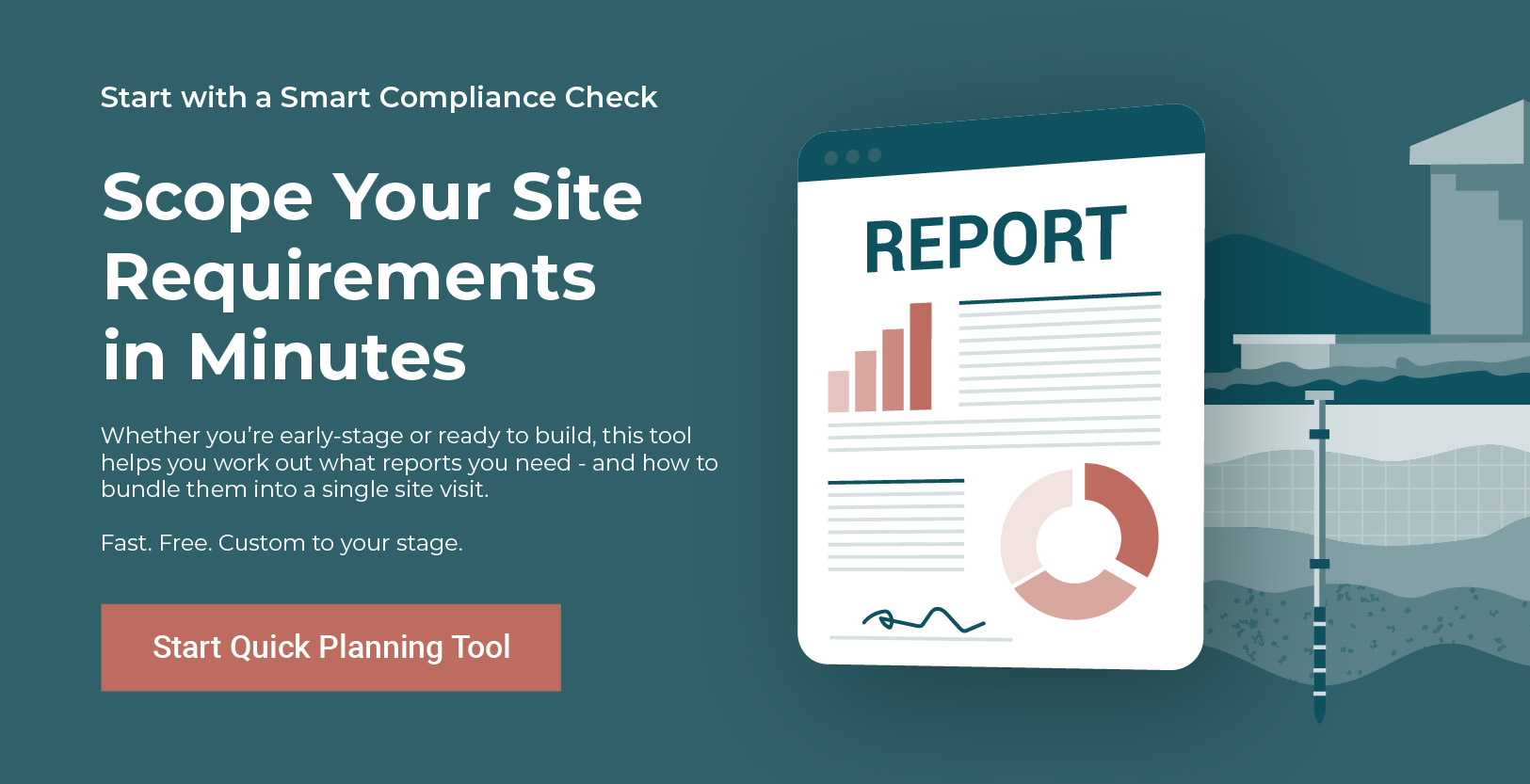Article Summary
As the environmental spotlight shifts from PFAS to newer threats, developers, industrial operators, and consultants must prepare for emerging contaminants Australia will confront—such as nanomaterials, microplastics, pharmaceuticals, and novel chemical additives. This article outlines promising detection technologies, evolving regulatory landscapes, and strategic steps to safeguard compliance and project value over 2025–2030.
Introduction
Per- and polyfluoroalkyl substances (PFAS) have dominated headlines and regulatory attention for years. Yet the next frontier of environmental risk is already emerging: nanomaterials, microplastics, pharmaceutical residues, flame retardants, and other novel substances are entering regulatory frameworks, scrutiny, and liabilities.
For property developers, industrial operators, environmental consultants, local governments, and financiers, staying ahead of this wave is mission-critical. In this article we explore:
- What new emerging contaminants are of greatest concern
- The state-of-the-art technologies for detection and monitoring
- Regulatory and policy trajectories in Australia
- Practical strategies to integrate readiness into your projects
By aligning early with emerging contaminants regulation, you build resilience, manage risk, and future-proof project viability.
Identifying New Contaminants to Watch
1. Nanomaterials & Engineered Nanoparticles
Nanomaterials—synthetic particles with dimensions between 1 and 100 nm—are used in coatings, catalysts, electronics, and advanced composites. Their small size gives them unique properties, but also complex environmental behaviour.
- CSIRO notes that nanomaterials such as fullerenes and metal oxides (e.g. ZnO, CeO₂) are under investigation for their ecotoxicology, fate, and bioavailability.
- In Australia, regulation is fragmented: the National Industrial Chemicals Notification and Assessment Scheme (NICNAS) handles industrial chemicals (including nano), Worksafe oversees workplace exposure, and consumer regulators (e.g. ACCC) regulate product claims.
- Environmental risks include transformation, accumulation in soils or sediments, and potential nanoparticle transport across membranes or into groundwater.
Given the evolving science, nanoparticles are likely to become more explicitly regulated in contaminated land and water site assessments.
2. Microplastics and Nanoplastics
Microplastics (particles < 5 mm) and their smaller cousins (nanoplastics) are increasingly seen in soils, landfill leachate, stormwater, and biosolids.
- Australian research estimates that microplastics are ubiquitous in aquatic environments, with knowledge gaps in terrestrial and atmospheric matrices.
- Studies of biosolids in Australia show microplastics in treated sludge samples at 11 to 150 particles per gram, raising concern about land application pathways.
- Nationally, AS ISO 24187—a standard for microplastics analysis—has been released (open for comment) to guide methodologies.
- Microplastics pose hazards through physical entrapment, adsorption of organic pollutants, migration in pore spaces, and biological uptake.
Microplastics are proving especially relevant for developments reusing biosolids, landscaping fill, or integrating recycled materials.
3. Pharmaceuticals, Personal Care Products & Endocrine Disruptors
Pharmaceutical residues, hormones, antiseptics, and synthetic additives (e.g. in cosmetics or cleaning products) may enter soils and groundwater through effluent, stormwater, or site infiltration.
- The CSIRO “Emerging Contaminants” program explores these compounds’ fate, transformation, and ecological toxicity.
- Some jurisdictions globally are incorporating these classes into regulated contaminant suites due to concerns about endocrine disruption and chronic low-dose effects.
While regulation in Australia is nascent for these compounds in land contamination law, they are likely candidates for future screening in site investigation protocols.
4. Persistent Additives, Flame Retardants & Novel Industrial Chemicals
Chemical additives—phosphorus or bromine-based flame retardants, plasticisers, novel surfactants, and per- and polyfluoroalkyl precursors—may resist degradation and accumulate in soil or sediment.
- Global reviews of emerging contaminants emphasise these industrial chemicals as high-priority, particularly where legacy facilities or recycling operations exist.
- Their inclusion in site contingency assessments, especially around older industrial sites, is increasingly prudent.
Taken together, these contaminants form a multi-dimensional landscape of emerging regulatory and technical challenge.
Technological Tools for Detection & Monitoring
To manage emerging contaminants, robust detection, quantification, and monitoring methods are essential. Here are key technologies and approaches reshaping the field:
High-Resolution Mass Spectrometry & Non-Target Screening
- Liquid chromatography–high resolution mass spectrometry (LC-HRMS) and gas chromatography–HRMS enable non-targeted screening, detecting unknown compounds without pre-selection.
- This capability is crucial for nanomaterials, novel surfactants, and pharmaceutical breakdown products, which may not be in standard target lists.
Electron Microscopy & Nanoparticle Imaging
- Transmission electron microscopy (TEM) or scanning electron microscopy (SEM) coupled with energy-dispersive X-ray spectroscopy (EDS) helps visualise nanoparticles and characterise their elemental signatures.
- These techniques complement chemical methods by confirming particle morphology and size distributions.
Microplastic Sorting & Spectroscopy
- FTIR (Fourier-transform infrared spectroscopy) and Raman spectroscopy, often combined with microscopy or automated imaging, allow identification of polymer types in microplastic samples.
- Automated imaging plus classification software enables high-throughput particle counts and types.
Passive Sampling & Sentinel Devices
- Passive samplers (e.g. POCIS, Chemcatcher) can accumulate trace organics over time, improving detection of low-concentration emerging compounds.
- Nanoparticle “sinks” or sorbent media may be developed as sentinel devices to monitor nanoparticle fluxes.
Isotopic Labeling & Tracer Techniques
- For complex mixtures or nanomaterial fate tracking, isotopic labeling (stable isotopes) enables tracking of engineered particles’ transformation or movement within environmental matrices.
- This supports understanding mass balance, partitioning, and degradation pathways.
High-Fidelity QA/QC, Data Analytics & Machine Learning
- Rigorous QA/QC (blanks, replicates, spiking) is non-negotiable given low concentrations and contamination risk.
- Machine learning and chemometric tools assist in deconvolving complex signals, pattern recognition, and anomaly detection in large datasets.
By investing in these advanced tools early, developers and consultants can anticipate the needs of regulators and exceed minimum compliance thresholds.
Regulatory & Policy Implications in Australia
Australia is already responding to this emerging contaminants shift. Below are key trends, regulatory leverage points, and anticipated impacts:
National and Standards-Based Developments
- Standards Australia is guiding methodological consistency via AS ISO 24187 (microplastics analysis).
- National chemical regulators (NICNAS, now part of AICIS) are reviewing nano-substance risk assessment frameworks.
- Environmental research bodies (e.g. CSIRO) are generating data to support guideline development.
These underpin future regulatory uptake.
State-Level Contaminated Land & Water Regulations
- States may incorporate emerging contaminants into site investigation regulations, contaminated land registers, or environmental audit scopes.
- For example, when assessing soil or groundwater, regulators may increasingly demand nanomaterial screening, microplastic inventories, or pharmaceutical signatures, particularly for sensitive end uses (e.g. child-care, hospital, food production).
- Environmental Protection Authorities may issue new guidance or thresholds for emerging contaminants, imposing compliance expectations over time.
Liability & Due Diligence Trends
- Developers and consultants may be exposed to latent liability if emerging contaminants are found post-construction.
- Diligent due diligence and proactive screening reduce the risk of adverse surprises in transaction, financing, or public scrutiny.
Integration into Sustainability, ESG & ESG Reporting
- Emerging contaminant risk is becoming part of broader ESG and sustainability frameworks. Projects that fail to consider nanomaterials or microplastic risks may fall short of investor or community expectations.
- Environmental consultants will be asked increasingly to provide emerging contaminant risk assessments, mitigation plans, or monitoring protocols.
Incentives & Funding for Remediation Innovation
- Governments may incentivise innovative remediation techniques targeting emerging contaminants (e.g. nanomaterial remediation, microplastic capture, advanced oxidation).
- Early adopters in this space may benefit from competitive tendering or government research funding schemes.
Start with a Smart Compliance Check
Scope Your Site Requirements in Minutes
Whether you're early-stage or ready to build, this tool helps you work out what reports you need and how to bundle them into a single site visit.
Fast. Free. Custom to your stage.
How to Prepare Strategically (2025–2030)
Companies that integrate readiness into their project lifecycle will gain competitive advantage. Below is our recommended roadmap:
Step 1: Integrate Emerging Contaminant Screening into Early Site Due Diligence
- Add nano- and microplastic screening to Phase I/II site due diligence, particularly at industrial or landfill-adjacent sites.
- Use non-targeted screening or advanced analyses where risk indicators (e.g. prior chemical use) exist.
Step 2: Enhance Sampling, QA/QC & Laboratory Capabilities
- Engage laboratories capable of high-resolution, non-target screening and microplastic/nanoparticle analysis.
- Compel strong QA/QC protocols, chain-of-custody, and blank samples to manage contamination risk.
Step 3: Scenario Modeling & Risk Prioritisation
- Use fate and transport modeling to understand nanoparticle mobility, adsorption, and retention in soil/groundwater matrices.
- Prioritise contaminants likely to persist or migrate to sensitive receptors.
Step 4: Design Mitigation & Control Measures
- Consider barriers, adsorption media, filtration, sorbents, or reactive amendments to target nanomaterials or microplastics.
- For projects using recycled materials or biosolids, ensure source audit, particle screening, or pre-treatment to limit microplastic load.
Step 5: Build Monitoring & Adaptive Management Programs
- Establish baseline and periodic monitoring of emerging contaminants, including nanomaterials, microplastics, and pharmaceuticals, especially in leachate, stormwater, and groundwater.
- Use passive samplers, sentinel devices, or integrated monitoring platforms for trend detection.
Step 6: Engage Regulators and Stakeholders
- Stay informed on guideline development, public consultations, and regulatory trends for emerging contaminants.
- Propose pilot or voluntary monitoring programs to demonstrate commitment and technical leadership.
- Incorporate emerging contaminant disclosures and risk communication into project documentation.
Step 7: Embed in Governance, ESG & Stakeholder Assurance
- Develop internal protocols and governance guidelines for emerging contaminant risk.
- Communicate to investors, lenders, councils or buyers how you are managing future unknown risks.
Conclusion
PFAS may dominate today’s headlines, but emerging contaminants Australia must monitor—nanomaterials, microplastics, pharmaceuticals, and industrial additives—will define the regulatory and technical frontier in 2025–2030.
For developers, industrial operators, consultants, councils, and financiers, incorporating advanced detection, modelling, compliance readiness, and stakeholder transparency is no longer optional—it’s essential.
At Nova Group Pacific, we bring deep technical expertise in environmental construction consulting, contaminated land remediation, due diligence, compliance auditing, and project execution. We can help you:
- expand contamination screening to emerging classes
- design defensible mitigation and monitoring programs
- integrate emerging contaminant readiness into project governance
- engage regulators proactively and manage stakeholder assurance
Book a consultation with us today to future-proof your development or remediation projects against the next wave of emerging contaminant risk.

 Get Your Free Site Assessment
Get Your Free Site Assessment









 Get Your Free Site Assessment
Get Your Free Site Assessment









.png)
%20.jpg)







